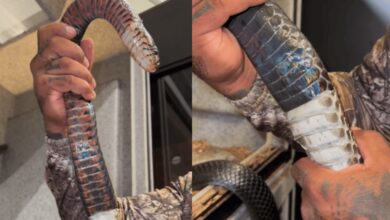Astronomers are prompted by a university study to capture a close encounter between Earth and a tailless comet
According to a recent Daily Mail article, a comet without a tail is scheduled to pass past Earth in the coming days. The UK’s University of Reading experts have verified that the comet C/2021 S3 Pannstars will pass Earth on its voyage. Researchers at the university are urging astronomers to record this occurrence with their cameras because they think that analyzing this tailless comet may provide important details on solar wind conditions, which will help to clarify this important part of space weather.

Solar winds, which are made up of charged particles that the Sun emits, might be dangerous for Earth’s technology as well as space missions. According to the University of Reading, comets are similar to cosmic windsocks in that they may disclose the intensity and direction of solar winds. According to scientist Sarah Watson, comets without tails may not be accurate predictors of solar wind, whereas comets with tailless tails give exact information regarding wind direction and strength that is independent of outside influences. A number of photos and monitoring of the comet’s path will be necessary to collect enough data, therefore amateur astronomers will be using their telescopes to record this celestial event.
Watson discusses the significance of repeatedly timing comet pictures in order to precisely track the comet’s orbit around the solar system. By taking pictures of the comet and sharing them with experts at the University of Reading, amateur astronomers have a great chance to further scientific study.
Scientists reassure the world that Earth is not in danger from the approaching C/2021 S3 Pannstars comet. It has been visible in the night sky since February 14 and will continue to be so until the end of March, becoming brighter as it gets further from the Sun. It is doubtful, however, that you could see it without binoculars or a telescope.
Astronomers advise anybody who want to take high-quality photos of the comet to use a camera with a big lens coupled to a tiny telescope. To keep a careful eye on the comet’s passage through the solar system, Watson suggests shooting many timed pictures. Those who manage to take a good picture of the comet are invited to send it to Sarah Watson, a physicist at the University of Reading.







